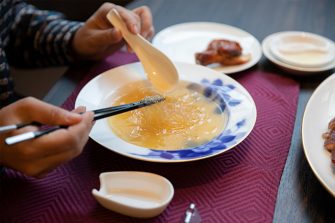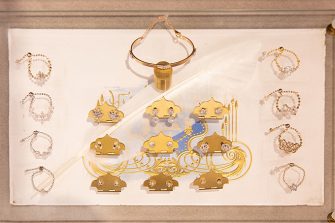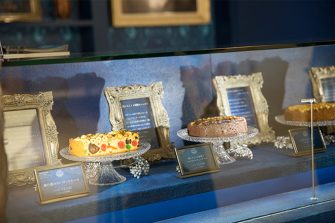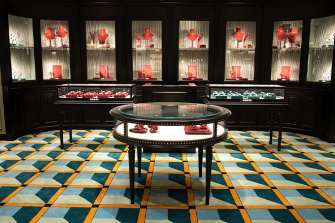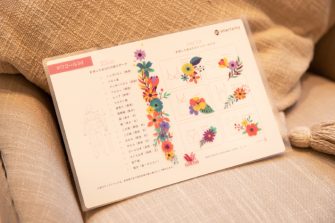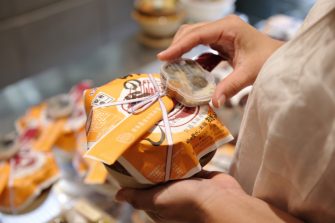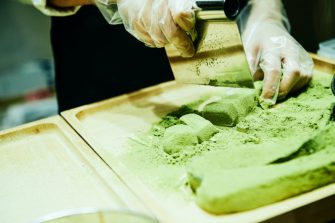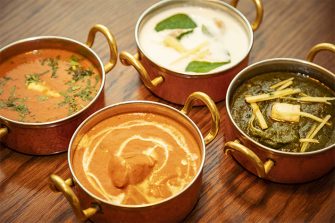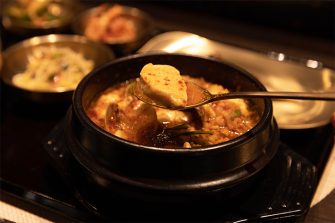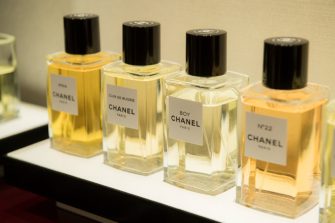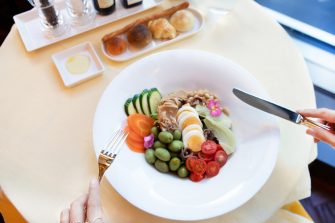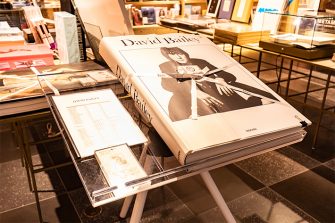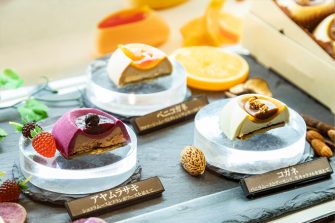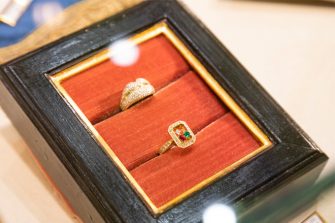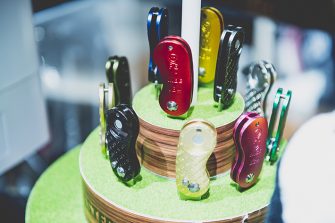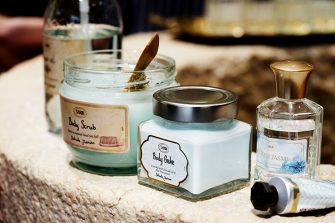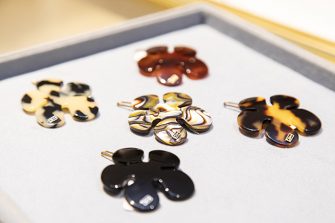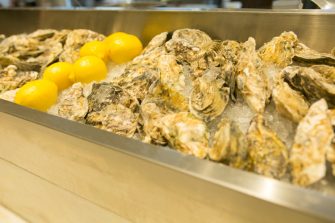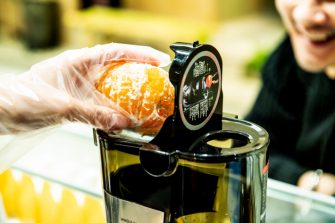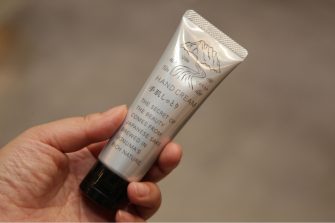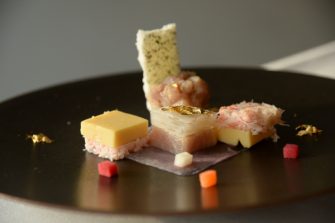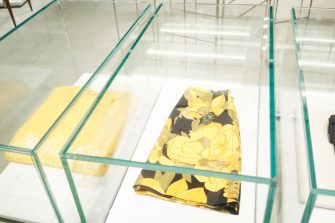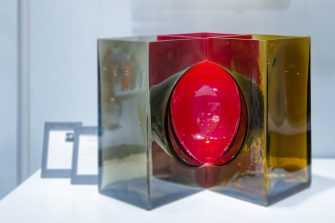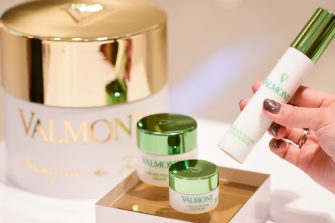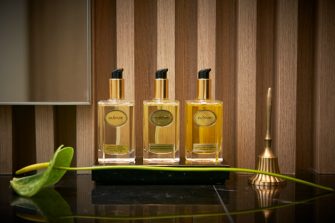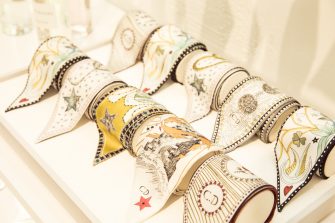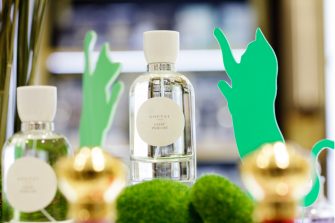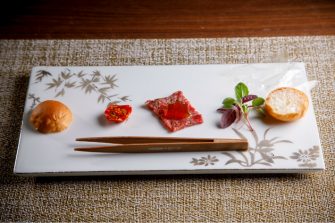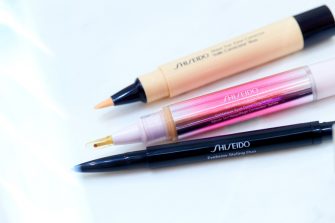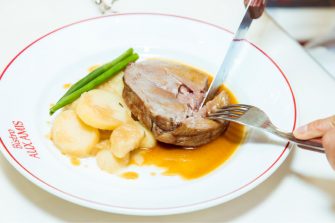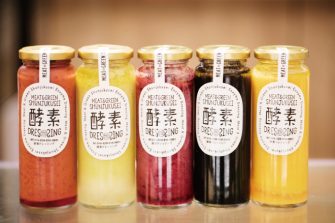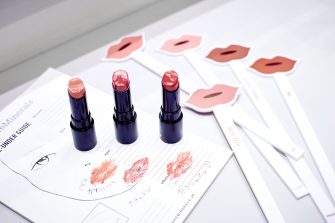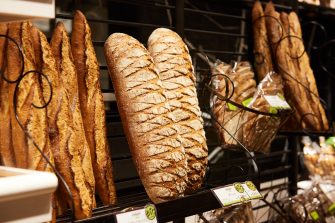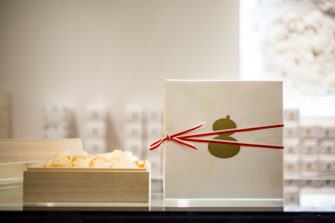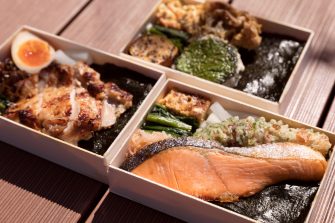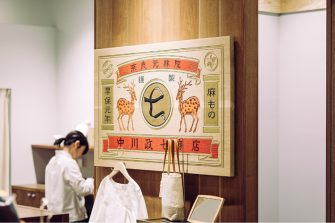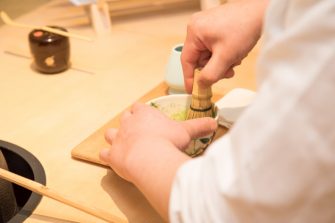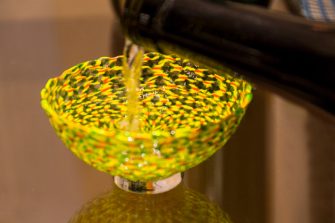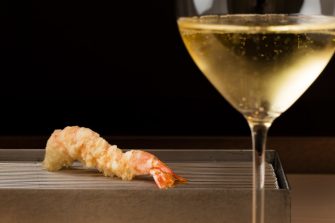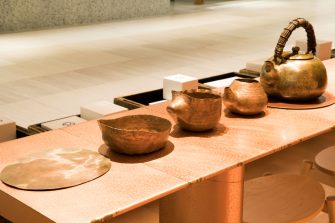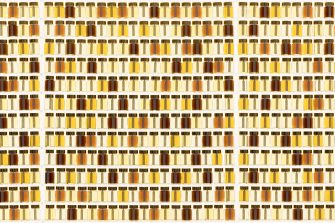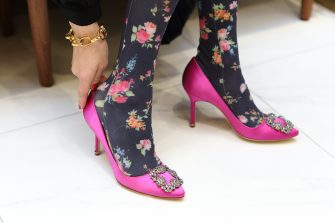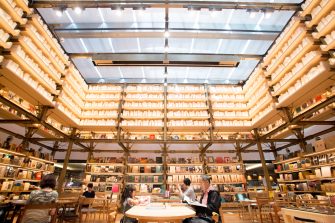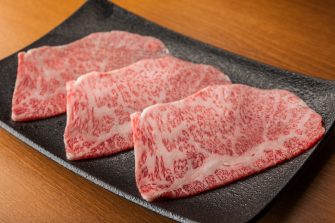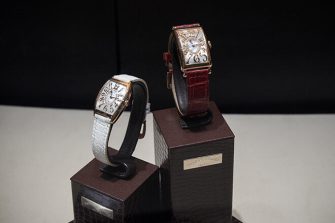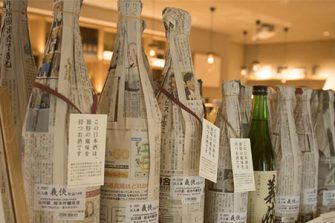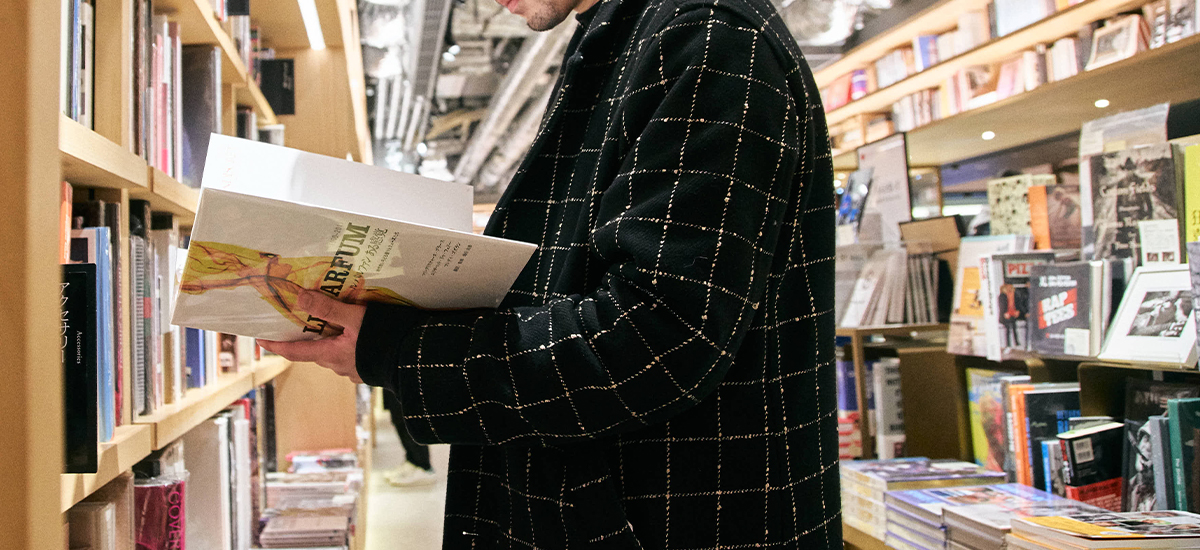

GINZA SIX EDITORS
ファッション、ジュエリー&ウォッチ、ライフスタイル、ビューティ、フード…
各ジャンルに精通する個性豊かなエディターたちが、GINZA SIXをぶらぶらと
歩いて見つけた楽しみ方を綴ります。
GINZA SIXで、“香り”をめぐる旅をする Fragrant Travels at GINZA SIX
大城 壮平
GINZA SIX EDITORS Vol.104
外出自粛が続く中、家にいる時間が必然的に長くなり、気は滅入るばかり。そんな中、僕が見つけた一つの楽しみが“香り”でした。香水のエレガントな香り、古本のどこか懐かしい香り、洗剤や柔軟剤の優しい香り、スパイスカレーの刺激的な香り、ワインやウイスキーの美味しい香り。自宅にいても、日々いろんな香りを発見することで、陰鬱な自粛生活に細やかな楽しみを見出していました。
そして、香りへの関心はその後もますます加速するばかり。もっといろんな香りを知りたい、買ってみたい、食べてみたい、楽しみたい。それもどうせ外に出られるのなら最高峰の街の、最高峰の商業施設で。というわけで今回、ここGINZA SIXでさまざまな"香り"をめぐる旅に出てみました。
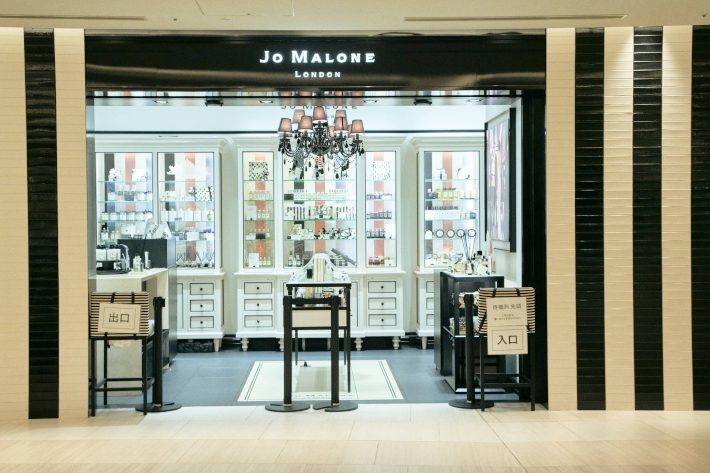
まず向かったのは2Fにある「Jo Malone London(ジョー マローン ロンドン)」。言わずと知れたロンドン発のライフスタイル・ブランドです。1994年にロンドンで誕生し、コロンをはじめ、バス&ボディやホームコレクション等を通して香りに包まれたシンプルで洗練された、豊かなライフスタイルを提案し続けています。僕は「Jo Malone London」の独創的な香りが好きで、キャンドルを愛用していますが、今回の狙いは香水。どんな香りとの出会いがあるのだろう。胸が高まります。
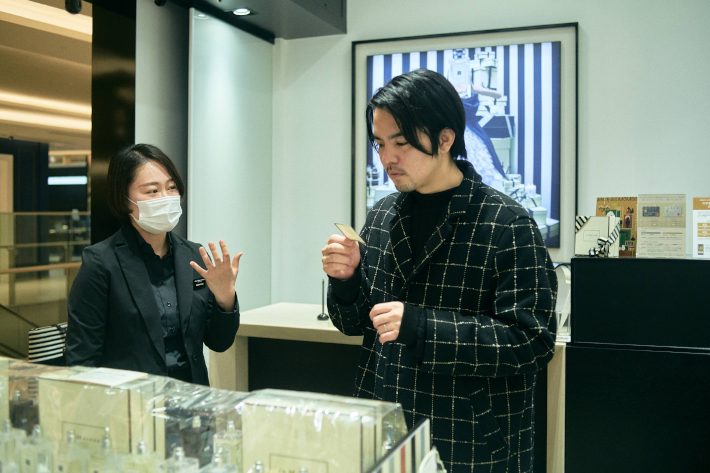
店舗内の「テイスティングバー」では、スタッフさんが一つ一つの香りを丁寧に説明してくれました。ベストセラーの「イングリッシュ ぺアー & フリージア」はその名の通り、みずみずしい洋梨とフリージアの香り。他にも「ウッド セージ & シー ソルト」や「ポピー & バーリー」など、この組み合わせでこんな香りになるのか!という驚きの連続でした。

どれもこれも素敵な香りで悩みつつも、「ダーク アンバー & ジンジャー リリー」のコロン(100ml ¥21,500 / 50ml ¥15,000 ※以下全て税抜価格)を購入。日本伝統の香道からインスパイアを受けたシリーズで、伽羅のリラックスした香りが特徴です。トップノート、ハートノート、ラストノートとで香りの表情が異なるところもまた魅力の一つ。今回はこちらの一本しか購入しませんでしたが、「Jo Malone London」のアイテムは“セント ペアリング”と言って、“香りの重ねづけ”がOK。今度はハンドクリームあたりを狙ってみようと思います。
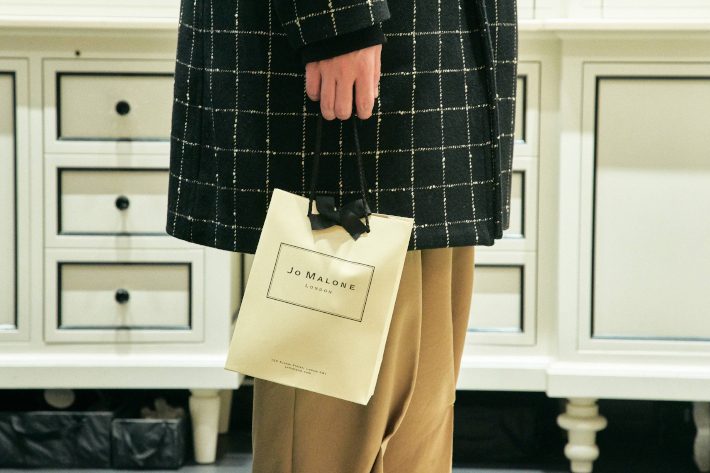
ショッパーはお馴染みのクリーム色のボックスにブラックリボン。あらためて考えると黒のリボンをショッパーに採用するって攻めてるなぁと思ったり。いい香りを片手に忍ばせお次は6Fの「銀座 蔦屋書店」へと向かいます。
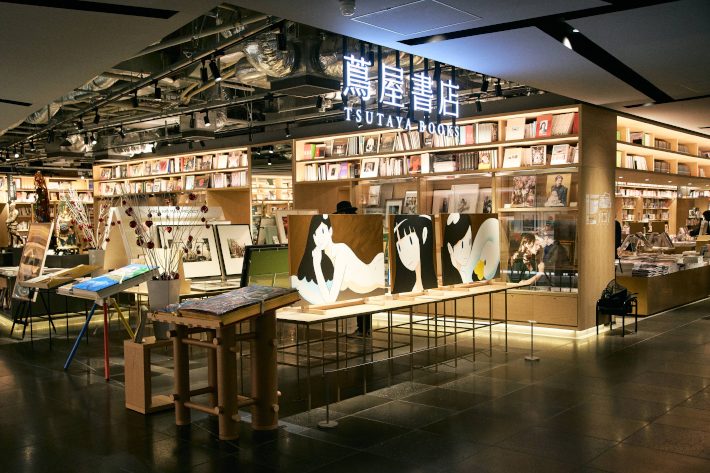
「銀座 蔦屋書店」は僕が大好きな本屋です。好きなポイントは多々あれど、ヴィンテージのアートブックや写真集を扱っているのもその理由の一つ。今日はここで古本特有のあの香りを楽しみつつ、香りにまつわる本も探していこうと思います。
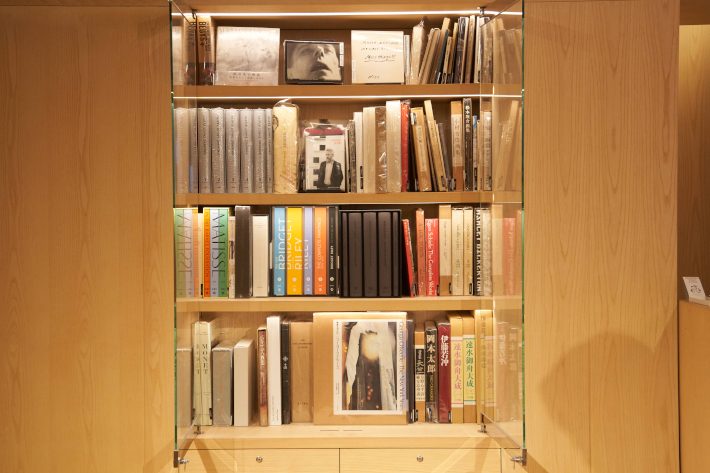
まずはヴィンテージブックのエリアへ。この本棚にはお店の中でも一番貴重なタイトルが並んでいます。ガラスの扉戸を開くと、どこか懐かしみのある香りがふわっと漂ってきました。並んでいるのはヨーゼフ・ボイスの『Coyote』にピカソの『A Los Tros』、『松本俊介素描』…どれもいつかは手に入れたい素晴らしい本ばかり。装丁やタイトルを眺めるだけでも幸せな気持ちになります。
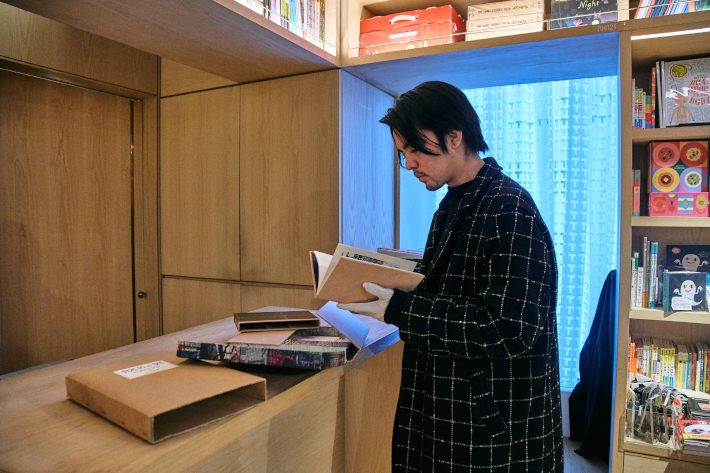
とりわけ気になったのは大竹伸朗さんが1994年に求龍堂より出版された『カスバの男 モロッコ日記』の特装版(145,000円)。内容はもちろんのこと、その丁寧かつ飛ばしまくっている装丁があまりにもカッコよかったです(権利の関係できちんと見せられないのが残念)。編集は全盛期の『POPEYE』『BRUTUS』で活躍し『ROADSIDE JAPAN 珍日本紀行』(筑摩書房)で木村伊兵衛写真賞を受賞した都築響一さん。僕も紙を扱う編集者の端くれとして、いつかこんな素晴らしい本を作ってみたいと思いました。
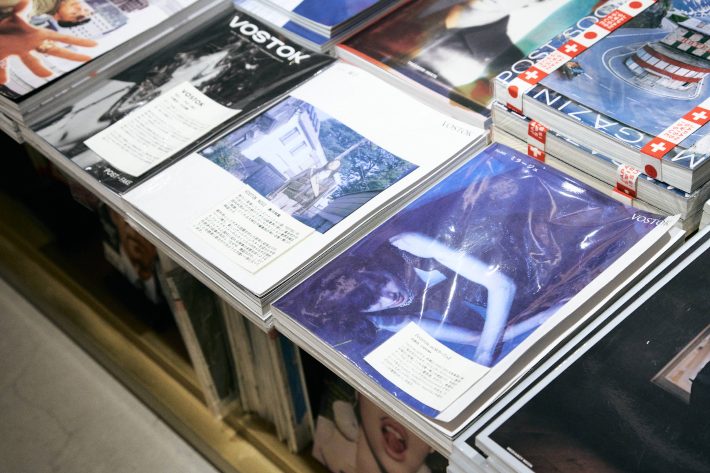
ファッション雑誌のコーナーでは、僕が制作している雑誌『VOSTOK』も発見!バックナンバーがすべて揃っている上、とても丁寧なキャプション付きで感動しました。「銀座 蔦屋書店」のみなさんにはただただ感謝です。自費出版で雑誌を作っていると、紙媒体はこういう書店や書店員さんの存在に本当に助けられているなと実感します。海外のファッション誌の真似事じゃない、日本人にしか出来ないオリジナリティのあるファッション誌を作ろうと思って始めた『VOSTOK』。毎号これでもかというぐらい心血を注いでいるので、こうして完成して並べられているのを見るとやはり感無量です。ちなみに表紙は左から奥山由之さん、髙橋恭司さん、細倉真弓さんに撮影して頂きました。
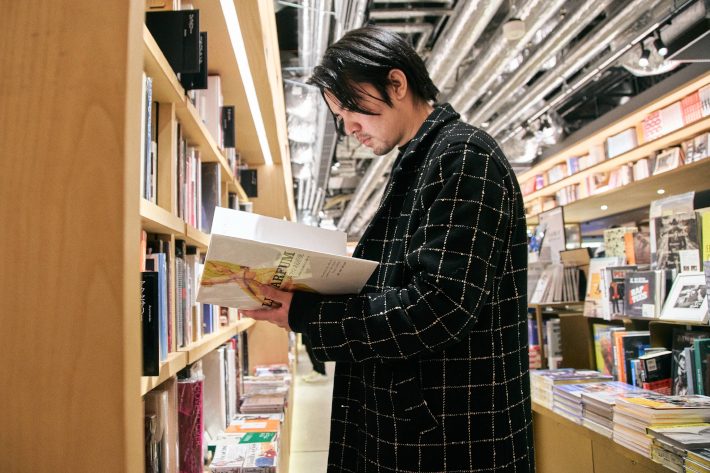
ファッション雑誌エリアの斜向かいに、香りにまつわる本を揃えた一角がありました。香草やホールスパイスの図鑑から、歴代のメゾンが発表した名作香水のカタログまで、幅広い香りの本がズラリ。さすがのラインナップです。今回はその中から資生堂の調香師であった中村祥二さんの著書『調香師の手帖』と、南仏グラースの調香師38人の解説による『調香師が語る香料植物の図鑑』の2冊を購入。どちらもとても面白く、長い付き合いになりそうです。

香りをまとい、香りを学んだあとは、香りを食べる! ということで最後に訪れたのは、同じく6Fのインド料理専門店「TAMARIND(タマリンド)」。実はナンやタンドールなど一般的に知られているインド料理は北インド料理のこと。このお店は1986年創業の神保町にある北インド料理の名店「マンダラ」がルーツで、インドへの渡航歴50回近くを数えるオーナーが都内では珍しく、北インド料理と南インド料理のいずれも堪能できる店としてオープン。エントランスには早くもスパイスの良い香りが漂っています。

日本のインド料理店ではネパールの料理人が少なくないですが、ここでは北と南インド人5人が常駐。そのことからもお店の本気度が伺えます。オープンキッチンのような状態で、めずらしい調理器具や調理方法を直に見られるのも嬉しいポイント。

早速3品が到着!「プローン・アムリットサリー」(980円)というスパイスの効いた海老のフリットに、ヒンディ語でハンカチを意味する「ルマリロティ」(440円)という名のまさにハンカチのように折りたたんだ料理人のテクニックも味わえるパン、そして南インドの沿岸地方の「マラバール風のフィッシュカレー」(1,580円)です。

「プローン・アムリットサリー」は一口食べるたびに、海老も旨味と一緒に様々なスパイスの味や香りが口いっぱいに広がります。フィッシュカレーもフレッシュなココナッツがよく効いていて絶品。「ルマリロティ」も通常のナンより味がしっかりついていて最高でした。
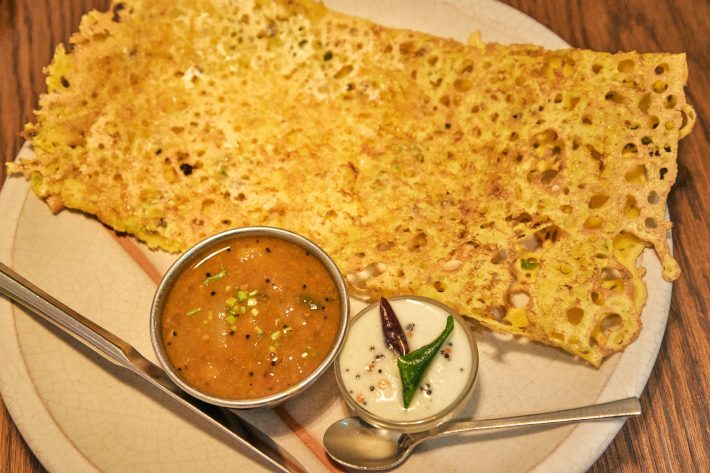
最後に遅れて登場したのは「レヴァドーサ」(1,580円)というレンズ豆が入ったクリスピークレープ。すごい大きさとビジュアルです。生地にはお店の名前の由来である南インドの果実タマリンドのスパイスをはじめ、いろんなスパイスの風味を感じることが出来ました。香りも味もはじめての連続。「タマリンド」でしか味わえない料理の数々…‥近いうち絶対に再訪しようと思います。
ロンドンが産んださまざまな香りを堪能し、美しいヴィンテージブックに触れ、香りにまつわる本を買い、本格的なスパイスを効かせたインド料理に舌鼓を打つ。わずか3店舗ながらも、ここGINZA SIXで新たな”香り“を知り、楽しむことが出来ました。でも、GINZA SIXには、コーヒーサロン「GRAND CRU CAFÉ GINZA」に、ワインショップ「エノテカ」、抹茶の「辻利」に「diptyque」と、新たな“香り”と出会えるお店がまだまだたくさんあるようです。次はどのお店でどんな香りと出会えるのだろう。“香り”をめぐる旅路はまだまだ続きそうです。
Text: Sohei Oshiro Photos: Mitsutaka Omoteguchi Edit: Yuka Okada(81)
Spending so much time at home can leave you feeling melancholy. To get by, I’ve found some respite in fragrance: the elegant aroma of perfumes, the nostalgic smell of old books, the gentle scent of detergents and fabric softeners, the pungent aroma of spicy curry, the delectable bouquet of wine and whisky. Even while homebound, I’ve discovered from day to day a variety of scents, which for me provided a subtle source of enjoyment in an otherwise featureless locked-down life.
My interest in fragrance has only blossomed since. I want to learn about, buy, try, and enjoy even more scents and aromas. And since we can now venture out, why not go to the ultimate retail complex in the ultimate Tokyo district? Today, my fragrant travels take me to GINZA SIX.

I go first to Jo Malone London on the second floor, a London-based lifestyle brand you’re certainly familiar with. Launched in 1994, the brand presents spare, sophisticated, enriching lifestyles with fragrance—through colognes, above all, but also bath and body products and its home collections. I like Jo Malone’s creative scents. I love their candles. But my goal today is cologne. I’m excited to see what I might encounter.

At the in-store testing bar, the attendant carefully explains each fragrance to me. The best-selling English Pear & Freesia is, just as the name suggests, the scent of fresh pears and freesia. I’m also introduced to strange bedfellows, like Wood Sage & Sea Salt and Poppy & Barley. I’m astonished at the scents that emerge from the combinations!

With so many wonderful fragrances, I’m not sure which to choose. I end up buying the Dark Amber & Ginger Lily cologne (100 ml, 21,500 yen / 50 ml, 15,000 yen; all prices listed before tax), a series characterized by a relaxing, agarwood aroma and inspired by traditional Japanese incense ceremony called Kodo. From top note to heart note to last note, the expression of a fragrance changes, which simply adds to its appeal. I bought just one bottle today, but with Jo Malone products, the practice of scent pairing—combining fragrances—is perfectly acceptable. I’ll look for some hand cream the next time.

The bag is the familiar cream-colored box with black ribbon. Come to think of it, the black ribbon is a bold move. Carrying with a good scent in one hand, I head to Ginza Tsutaya Books on the sixth floor.

I love this bookstore for diverse and sundry reasons. One is their vintage art book and photo collection. Today, while enjoying that great old book smell, I plan to go look for books on fragrance.

First up is the vintage book area. This shelf features some of the store’s most treasured titles. With the opening of the glass doors, the scent of nostalgia comes wafting forth. There’s Joseph Beuys’ Coyote, Picasso’s A Los Toros, a book of Shunsuke Matsumoto’s drawings—all landmark volumes I’d be overjoyed to own someday. Just looking at the bindings and titles is a delight.

I’m particularly interested in Shinro Otake. The store has a special edition of Kasuba no otoko: Morocco nikki (“Kasbah Man: Morocco Diary”) (145,000 yen), published by Kyuryudo in 1994. What’s inside, of course, is remarkable. But the craft and workmanship and radical design of the binding is almost as remarkable (it’s too bad I can’t show it to you more clearly—copyrights!). It’s edited by Kyoichi Tsuzuki, who worked at POPEYE and BRUTUS in their heyday and won the Kimura Ihei Award for ROADSIDE JAPAN (Chikumashobo). As a lowly editor working in print media, how great would it be, I think, to create an amazing book like this someday.

In the fashion magazine section, I find my magazine, VOSTOK! All the back issues are here, and the bookstore provides some really nice captions. Thank you, thank you, thank you to everyone at Ginza Tsutaya Books! With print media, when you publish a magazine on your own dime, bookstores like this and their staff can really help. I wanted to create a Japanese original, a fashion magazine that wasn’t a pale copy of overseas fashion magazines. And that magazine is VOSTOK. I put my heart and soul into every issue, like there’s no tomorrow, so it moves me no end to see every single issue on display here. The cover shots, incidentally, from left to right, are by Yoshiyuki Okuyama, Kyoji Takahashi, and Mayumi Hosokura.

Located in the kitty corner of the fashion magazine section is an area with books on scents and fragrances. From encyclopedias of herbs and whole spices to catalogs of famous perfumes published by the major fashion houses—row after row of a diversity of fragrance books. Of course Tsutaya would have a lineup like this. Today, I buy two books: Chokoshi no techo (“A Perfumer’s Notebook”) by Shoji Nakamura, who was a perfumer at Shiseido, and L’Herbier Parfumé, an encyclopedia of aromatic plants with commentary by 38 perfumers from Grasse in southern France. They’re both profoundly absorbing tomes. I have a feeling I’ll be referring to them for a long time.

After applying and learning about fragrance, it’s time to eat some! So, lastly, I go to Tamarind, an Indian restaurant also located on the sixth floor. The Indian food most people know, dishes like nan and tandoori chicken, comes from northern India. This restaurant has its roots in Mandala, a restaurant famed for its northern Indian cuisine established in Jinbocho in 1986. The owner, who’s been to India close to 50 times, has opened the rare restaurant in Tokyo where you can enjoy both northern and southern Indian dishes. You encounter the great spicy aromas even at the entrance.

It’s not unusual for Japan’s Indian restaurants to have Nepalese cooks. In contrast, Tamarind has five full-time cooks from northern and southern India, suggesting its endeavor to represent genuine Indian cuisine. The kitchen is open to view. Part of the fun here is viewing the unfamiliar cooking implements and methods.

My first three dishes quickly arrive. The Prawn Amritsari (980 yen) is spicy prawn fritters; Rumali Roti (440 yen), which means ‘handkerchief bread’ in Hindi, is, just as the name indicates, bread folded like a handkerchief. The technique of the cooks is marvelous and fascinating. Finally, Malabar Fish Curry (1,580 yen), from a coastal region in southern India.

One bite of the Prawn Amritsari fills my mouth with the flavor of prawns and the flavor and aroma of spices. The fish curry is great, too—the fresh coconuts really work well. The Rumali Roti is just as impressive, more flavorful than regular nan.

Last to appear is the Rava Dosa (1,580 yen), a crispy crepe filled with lentils. Its huge dimensions are a visual treat. The crepe lets you experience a range of spices, starting with tamarind, the southern Indian fruit that gives the restaurant its name. The aroma and flavor are both firsts for me. So many dishes available only at Tamarind…I’ll definitely be back soon.
So I’ve taken in fragrances from London, handled beautiful vintage books, purchased books on aromas, and relished the authentic spicy flavors of Indian food. In just three stops, right here at GINZA SIX, I’ve learned about and enjoyed new scents and fragrances. Still more places at GINZA SIX remain to be discovered in this odyssey of new aromas, places like the coffee salon Grand Cru Café Ginza, wine shop Enoteca, green tea proprietors Tsujiri, and Diptyque. Where to go next? My fragrant travels stretch to the horizons.
Text: Sohei Oshiro Photos: Mitsutaka Omoteguchi Edit: Yuka Okada(81)
大城 壮平
編集者。1988年、沖縄県宮古島生まれ。学生時代から『HUgE』(講談社)にてアルバイトを始め、『Them magazine』(Righters)のエディターを経て、2018年に独立。2019年3月に『VOSTOK』を創刊する。株式会社CHIASMA代表。2020年12月に『VOSTOK』Vol.004を発刊。


